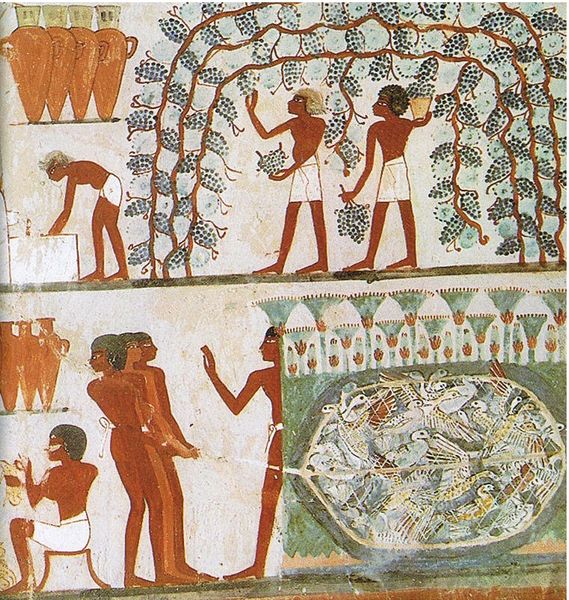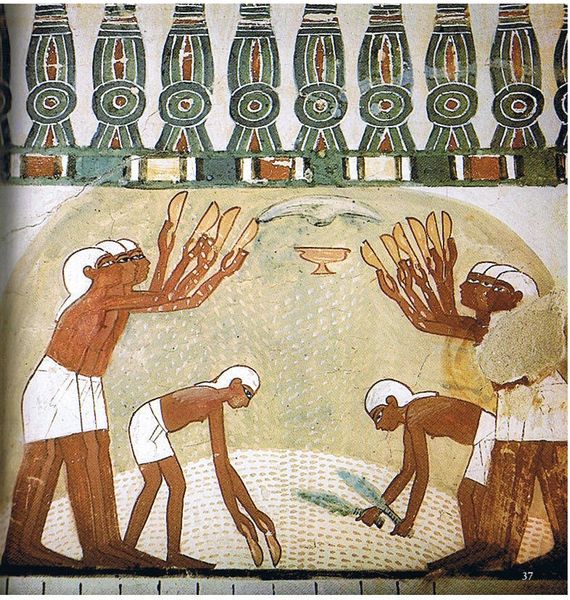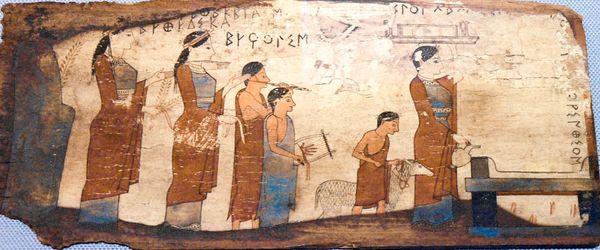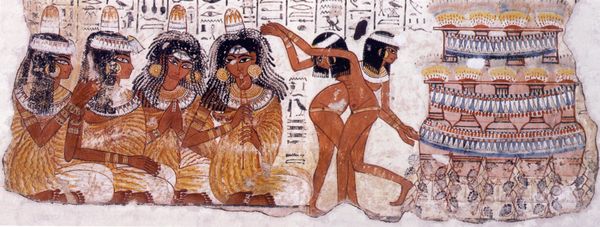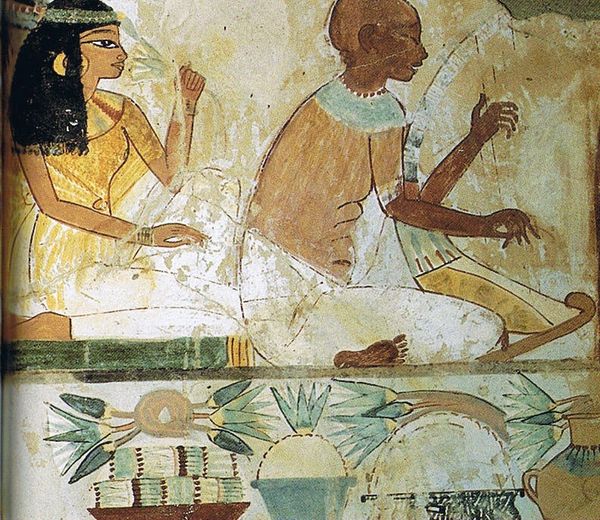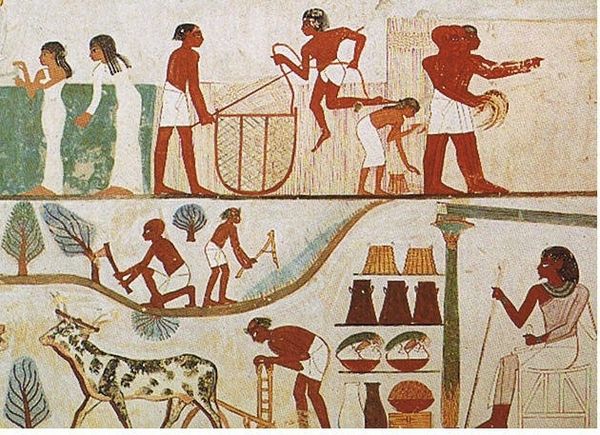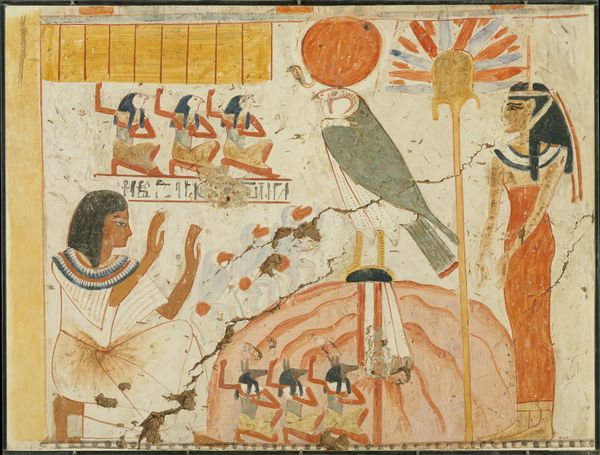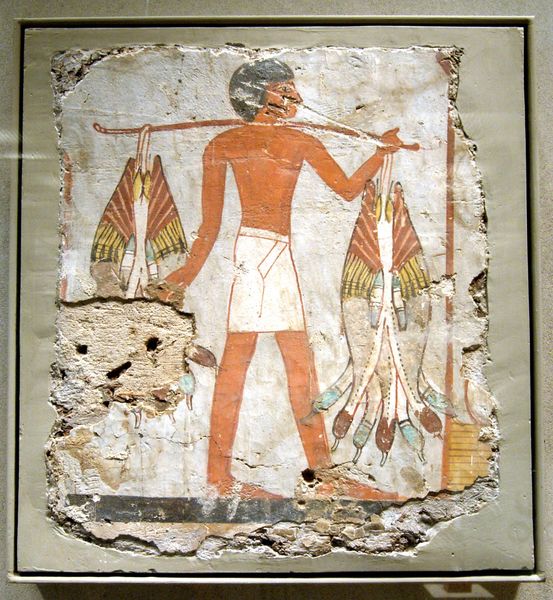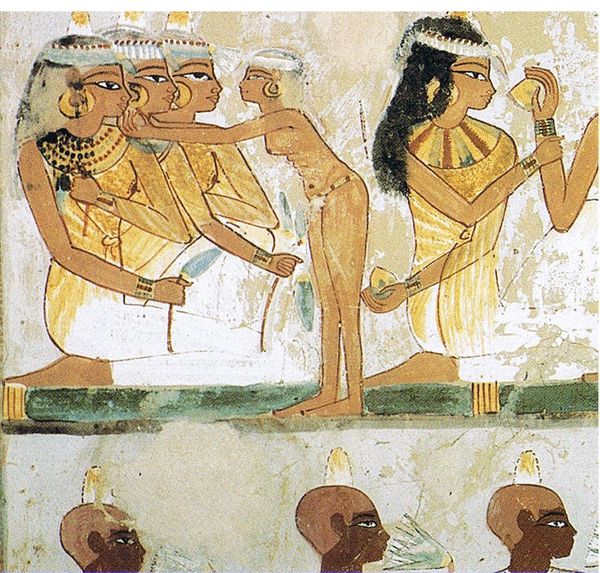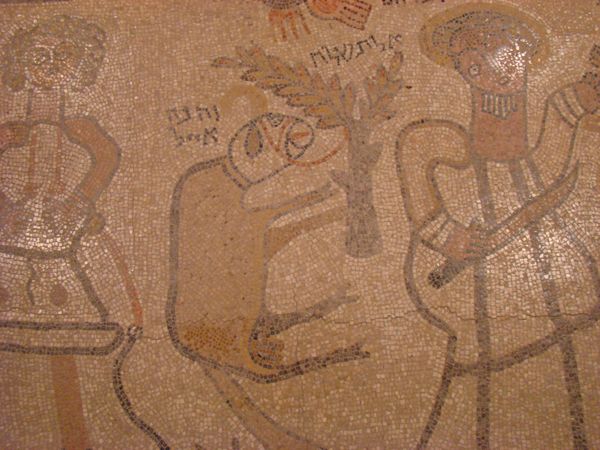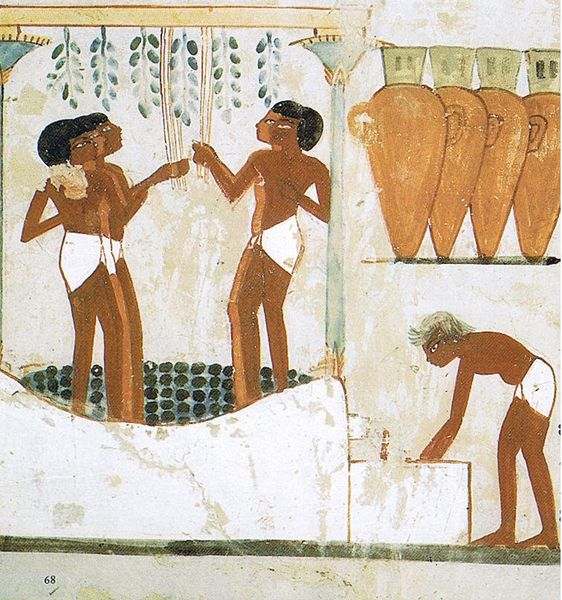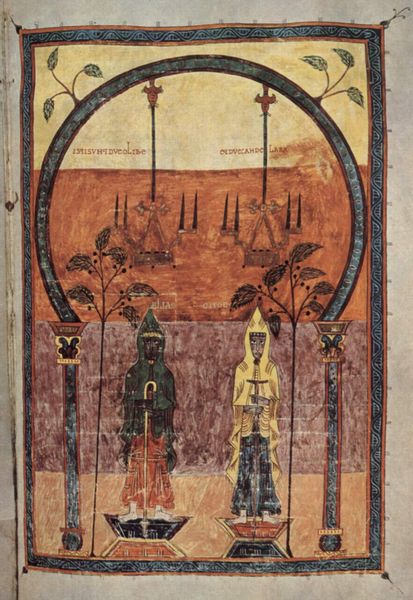
mosaic, tempera
#
mosaic
#
byzantine-art
#
narrative-art
#
tempera
#
figuration
#
text
#
handmade artwork painting
#
tile art
#
painting art
#
mixed media
Copyright: Public domain
Curator: I’m struck by how powerfully this scene communicates a sacred narrative despite its seeming simplicity. The figures are quite stylized, aren’t they? Editor: Indeed. Here we have a mosaic panel from the Beth Alpha Synagogue in Israel, dating back to 527. It's a truly fascinating example of Byzantine art rendered through the medium of mosaic and tempera, but beyond the medium it feels...raw. It lacks a certain finesse, but somehow that rawness adds to its impact. What do you think accounts for this lack of typical 'finish'? Curator: Well, consider the function. This wasn't intended as 'high art' for an elite patron. This was created for a community, a specific congregation meant to visually communicate key stories and beliefs. That directness in style ensures the message is clear, avoiding elaborate flourishes that might obscure meaning for the intended audience. You could even argue this handmade style carries symbolic weight, a reminder of common origins of shared faith and history in labor. Editor: I can see that. Look at how this panel tells the story of the Binding of Isaac. Abraham, Isaac, the ram, and even God's hand reaching down—all within one relatively small frame. What's particularly intriguing is the representation of both Abraham and Isaac, presented with near equal visual prominence. Is this emphasis intentionally mirroring power dynamics within faith, the often-difficult tension of intergenerational inheritance and trauma, of blind obedience? Curator: Absolutely, it could reflect tensions and continuity, which are key to understanding ritual sacrifice beyond the specific story. By visually elevating both, the artwork acknowledges the complex psychological landscape involved in the divine demand. Furthermore, note how the other elements like the ram and the altar are stylized with intentional references in scale to human-sized elements, grounding these as 'human moments' rather than abstract spiritual ideas. Editor: And let’s not forget the symbolic nature of sacrifice and subjugation that these visual elements create for viewers in the physical space. Were these panels meant to elicit complicity? A sense of collective guilt? This narrative choice—so visually pronounced—undeniably served purposes beyond just relaying scripture, particularly amidst the socio-political currents in 6th-century Byzantine-controlled Palestine. It certainly complicates one's viewing. Curator: Exactly. And by integrating it into the architectural fabric of the synagogue—placing it literally underfoot, like here on a floor mosaic—the Beth Alpha artists make it an integral part of ritual experience that has ripple effects for centuries. It reveals how we actively remember shared symbols as they morph from static, historical objects. Editor: A thought-provoking piece. It makes you consider both its place in history and the complex impact of cultural memory on both its creation and continued appreciation.
Comments
No comments
Be the first to comment and join the conversation on the ultimate creative platform.
